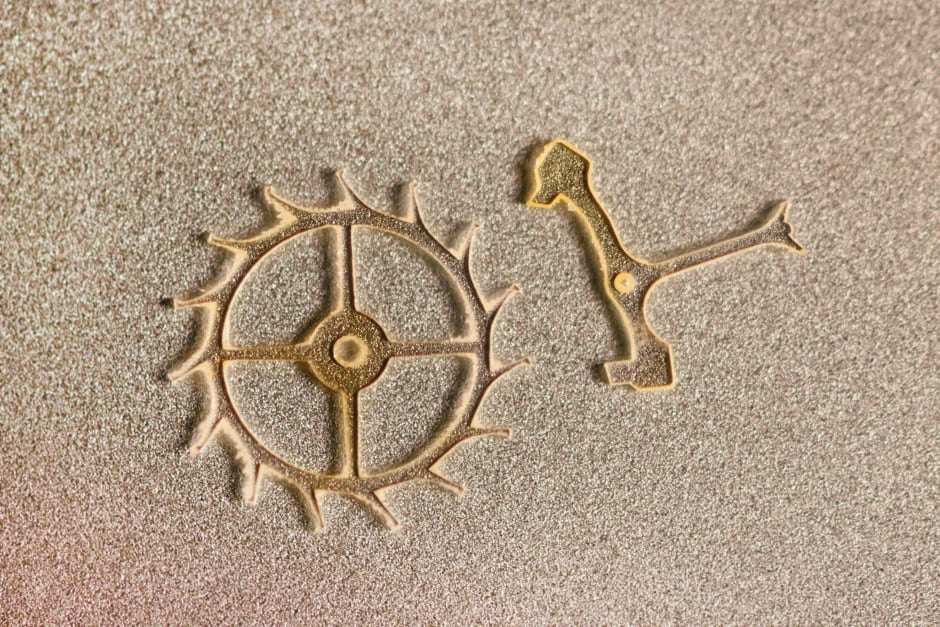
Diamond has a number of favourable properties but cutting it into complex shapes with micrometre precision remains very challenging.
Now, a process developed by a team led by Niels Quack, a Swiss National Science Foundation Professor at EPFL in Lausanne, makes it possible to carve a micromechanical watch system - a 3mm diameter escapement wheel and anchor - out of synthetic single-crystal diamond.
The Lausanne team is said to have refined reactive ion etching, a technique widely used in the computer chip industry, to carve synthetic diamond into three-dimensional shapes 0.15mm thick.
"We're getting close to watch industry standard thickness, which is about 0.2mm,” said Quack. "Our technique is interesting to industry, and we are in discussions with a Swiss watch company. We believe that diamond offers reduced friction, which should increase the power reserve. That's how long it takes until the watch has to be rewound. But it's still a hypothesis that needs to be tested."
Diamond has other advantages for watchmaking: it's translucid and can be coloured, and is also non-magnetic, which is a highly valued attribute in the current market.
Previously, reactive ion etching could create structures 0.05mm thick. When ions are accelerated by an electric field, they not only remove the diamond layers at selected spots; they also erode the mask that defines the desired shape. The depth of the structures that can be obtained is limited by the mask's resistance and thickness.
In under six months, Adrien Toros, a scientific assistant at the EPFL's Institute of Microelectronics, developed a double-layered mask that consists of one layer of aluminium, which adheres well to diamond, placed under a second layer of silicon dioxide, which is thick and more resistant to ionic activity. The result is a faster etching process claimed to enable nearly vertical, and deeper, cuts.
With the support of Innosuisse, the Swiss Innovation Agency, the team plans to pursue its collaboration with Swiss synthetic diamond manufacturer Lake Diamond, with whom the team has filed a patent.
"In the medium term this new technique will allow us to produce and commercialise precise micrometre components, and consequently to expand our field of activity", said Pascal Gallo, the company's CEO.
In a second project, the researchers are working to develop optical components from ultrapure diamond, such as lenses used in thermal imaging, which operate within the infrared spectrum, as well as laser components for industrial cutting.




Nanogenerator consumes CO2 to generate electricity
Whoopee, they've solved how to keep a light on but not a lot else.